
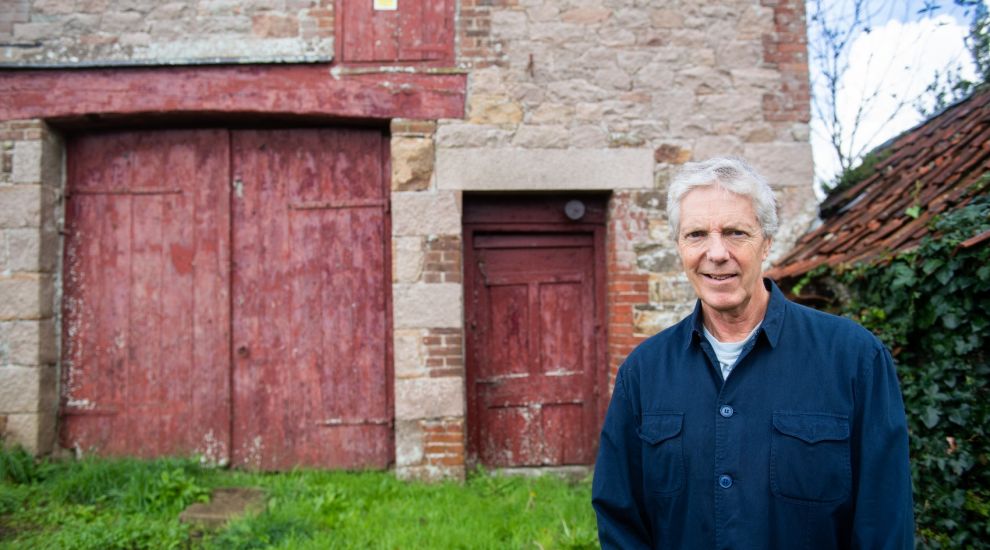

It was the sight of a skip in Knightsbridge that "radicalised" historic buildings consultant Antony Gibb.
Then an interior design trainee in London, he was driving down Knightsbridge one evening when he saw a shop born from the imagination of a highly respected designer that was once a staple of students’ textbooks being ripped up and thrown outside.
The “obscene waste of beautiful materials” led him to resolve: “Well, somebody must repair all the historic buildings, and that started me off…”
It’s a career he has been dedicated to ever since, and has seen him work on some of Jersey’s most iconic buildings, ranging from the National Trust’s Georgian House at 16 New Street and the Pitt Street regeneration.
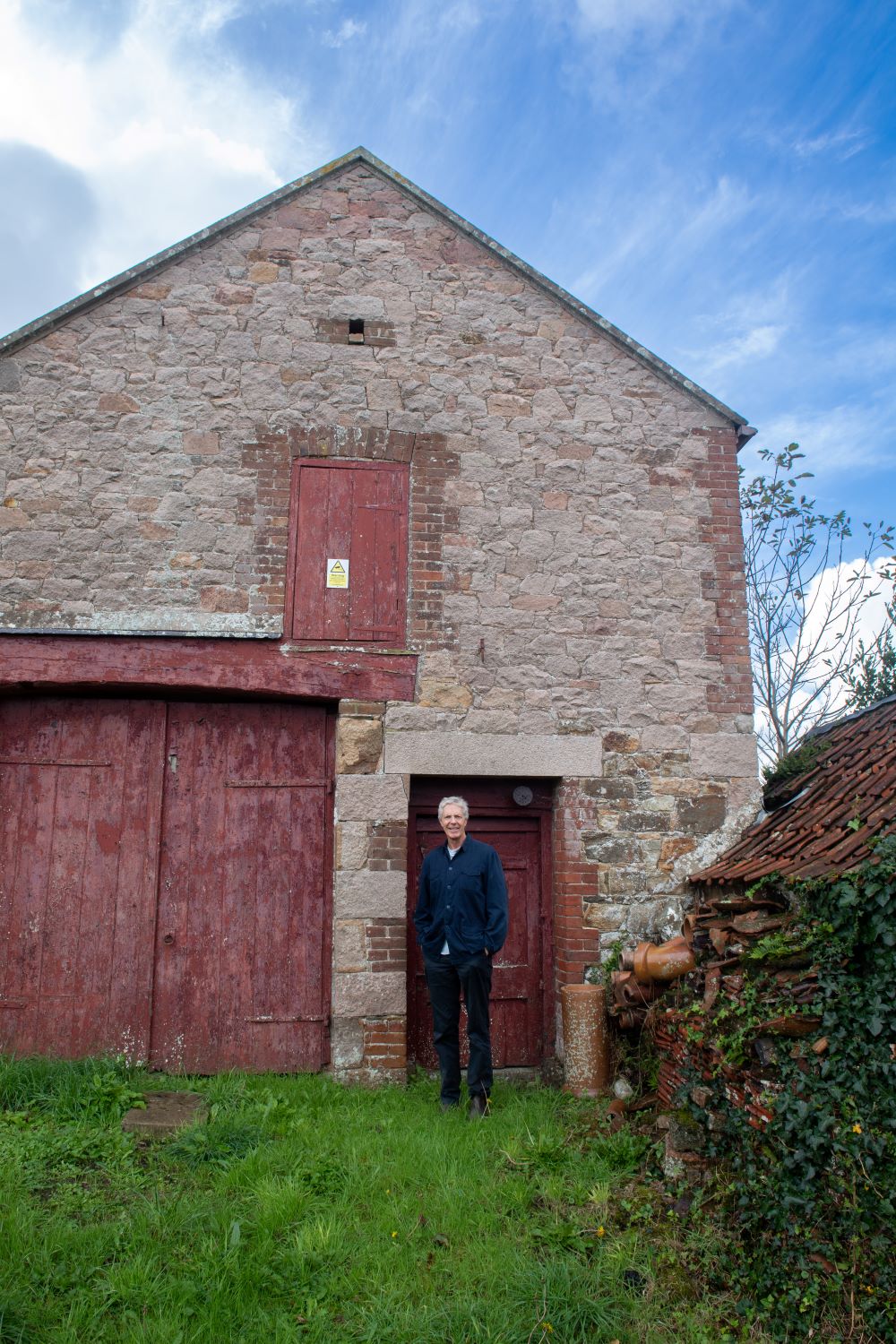
Pictured: Driven by the sight of a historic designer shop being dismantled, Antony Gibb, a former London interior design trainee, initiated a career dedicated to preserving Jersey's iconic buildings. (Jon Guegan)
But an increasing block to such work has been the lack of traditional skills locally.
To start solving that problem, he has set up the Jersey Building Preservation Trust, which is supported by Jersey Heritage, Société Jersiaise, National Trust and Andium Homes. This month, it will begin delivering courses focused on areas as varied as lime plastering to historic ironwork and blacksmithing.
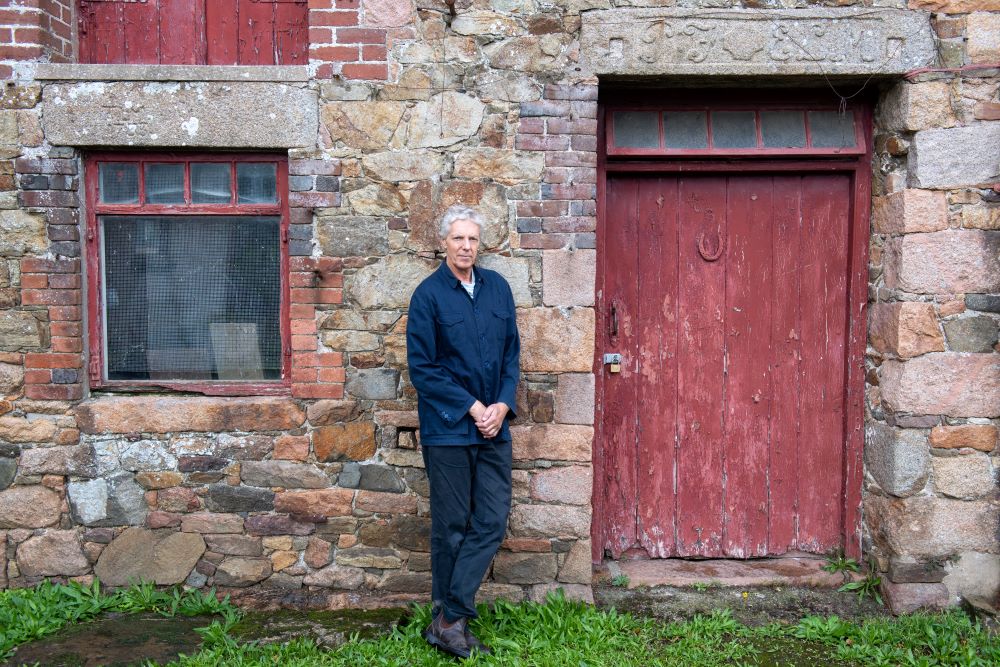
Pictured: Mr Gibb founded the Jersey Building Preservation Trust to address the local skills gap.
And there couldn’t be a better time, he told Express – not only could building these skills help revive vacant properties, but also bolster Jersey’s carbon neutrality drive. Moreover, there is a big business opportunity, if only someone were to seize it…
Here's what he said to say...
What skills have we lost over the years and why? And what sorts of traditional building features are we losing as a result?
"The building industry loves the idea of MMC because you get things made in factories, and then you ship them off to a building site, and then you bolt it all together like a kit.
"So construction, training and construction management training has majored on how you procure things and you bolt things together.
"And this is put less emphasis on traditional building skills like carpentry repaired joinery line plastering all the things you need to do up an old building, with the drive for retrofits, and if you're got carbon, if you've got vapour open buildings, and actually what we need is more people to understand how to retrofit those things appropriately.
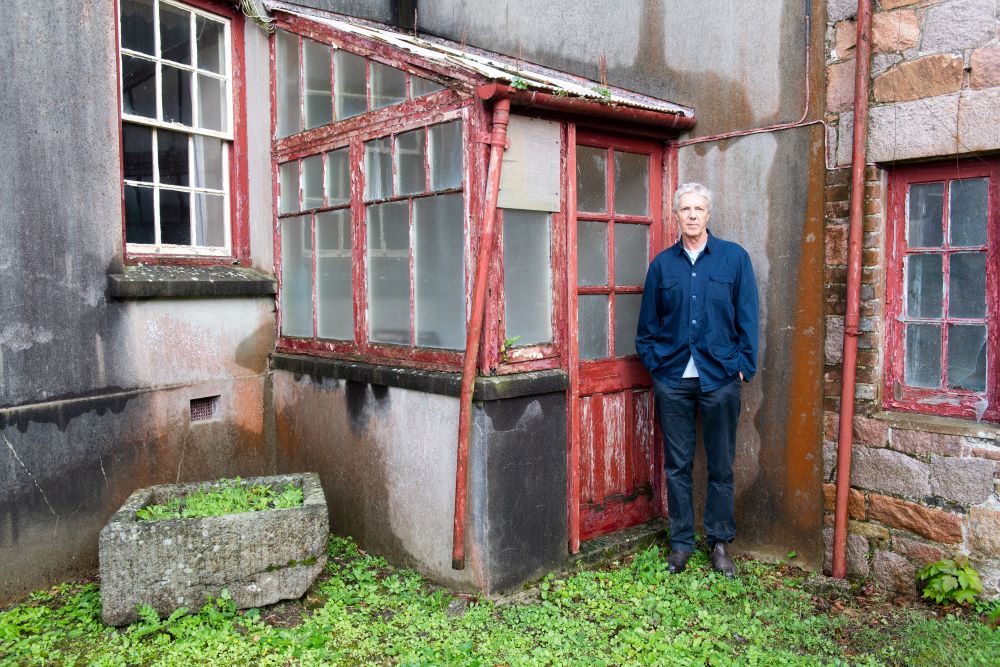
Pictured: Mr Gibb urges a shift from demolishing to preserving cultural heritage, emphasising the economic and environmental benefits of retrofitting existing buildings.
"…Internal joinery is a real example of what tends to go missing: skirting boards, architraves, doors, cupboards, all these tend to get ripped out and thrown away.
"They're all handmade, all part of our cultural heritage – made by Jersey people for Jersey – and they get put in a skip.
"That’s partially because people are refurbishing buildings and bringing them up to ‘standard’.
"At the same time, they’re losing visual interest: you look at a building on the outside, go inside, and think, ‘Look, it just looks like any development! They bought new skirtings, new doors, new everything’.
"It's not that difficult to take the things off then carefully put them back in again after you’ve done the works you need to do – but it’s just not in people’s mindset to do that."
Why is that?
"People aren't trained to think that way. Although the public loves it, at the same time, capital investment is unthinking. Often if people are investing in property and modernise a flat, they want the cheapest way of doing it.
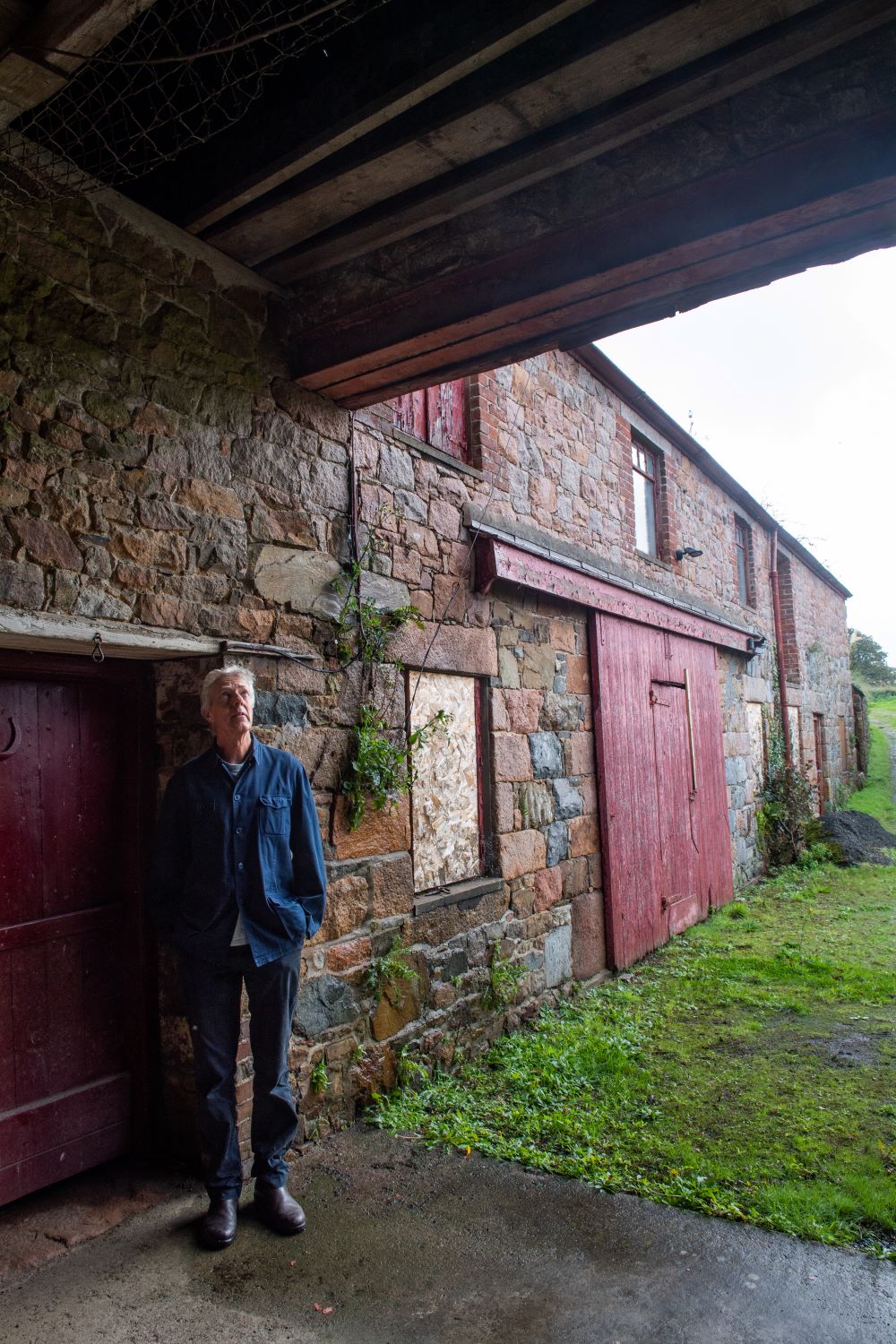
Pictured: “The retrofit market is going to be the is going to be the biggest game in town."
"But there's no skills training in keeping things – even though it may be sometimes be the same price or less to do so. Why would you take off all the doors, skirting boards, etc? That’s more expensive, isn’t it? People will turn around and say it’s too difficult. It’s only difficult because you don’t have the skills do to it.
Trying to address that lack of skills through courses, and tentative steps talking to Highlands… How great is the shortfall?
"That is an interesting conundrum, isn't it? What we know is that there are approximately 30% of buildings in Jersey are traditional buildings, roughly. So if you imagine all the construction that goes on in Jersey, 30% of the refurbishment of existing buildings will be using all these skills.
"…Now, it's interesting that the Housing Minister recently has said that, of the vacant homes, one third are traditional listed buildings. It doesn't surprise me in the least. What I do know is in my normal day job, there aren’t enough builders that I can go to and recommend. The problem is visible to me, and to my clients.
One of the biggest benefits of having the skills to appropriately refurbish ‘traditional’ empty properties will help bring more homes onto the market, but could there also be an economic argument too? We wouldn’t have to resort to specialists from the UK…
"Precisely. We get a gang of lath and lime plasterers over from England because there’s no one here – that’s a tremendous shame.
"The example I always give is that in 1995 there was no one doing stonemasonry or lime pointing. Now, you can go to any number of people – and the reason for that is that in 1995 the Jersey Heritage Trust, as it was then, was doing up Mont Orgueil Castle, and their Project Manager decided that they would teach a local building firm – young people – how to use lime mortar and mix lime mortar.
"…Lots and lots of people went on to set up on their own, having been taught at Mont Orgueil Castle, and they’ve employed other people. So, now, nearly 30 years later, there isn’t a shortage of stonemasons anymore. That’s fantastic.
"There is no reason why that can’t happen again. Hopefully these courses will get the ball rolling… We are also talking to Highlands, and so I hope ultimately we will be able to partner with them.
"…There’s also business opportunity. Upskilling or reskilling is going to make people money –the retrofit market is going to be the is going to be the biggest game in town. It's obvious because we've got so many existing buildings.
"There's going to be increasing emphasis – and there already is within the Bridging Island Plan – on not knocking things down and refurbishing them. This is the best thing you can do if you’re going to save carbon.
How exactly does building preservation fit into the island’s sustainability ambitions and net-zero carbon emissions target?
"We're always told to repair and reuse and recycle – that's the mantra of what's going on. Building conservation is that in itself: it is all about repair, reuse, and recycling. All we're doing is applying what we’ve been thinking about traditional buildings all along. That happens to come together with modern thinking on climate in a sort of beautiful way.
"For the first time for a long time, where it feels like historic buildings fanatics have been pushing against modern building practice, actually, they are talking the same language now.
"…One thing to remember is that an old building is never going to perform like a brand new building – performance is only one aspect of wanting to save carbon and energy. Now there's a greater understanding in Bridging Island Plan about the fact that existing buildings have ‘embodied energy’ within them.
"If you demolish an existing building, clear the site, put that away to landfill, then buy new materials and bring those by ship to Jersey, then transport them by lorry to your building site and then build them, before you've even started saving any energy, you've used an enormous amount of energy. The approximate calculation is it takes 10 times as much carbon CO2 equivalent to demolish and rebuild a building as it does just to retrofit an existing building.
That principle doesn’t seem to be well-understood or perhaps well-implemented yet… Where are the pressure points?
"Windows are the most tricky bits in terms of thermal performance in modern buildings.
"But there are things you can do like secondary glazing, applying film, closing curtains and shutters, and there’s behaviour change as well.
"Should we be wandering around in T-shirts and shorts in an old building, expecting that, burning masses of fuel as well? No one did in the past. You're better off going and buying a Passivhaus or flat in Castle Quay.
"There’s some interesting work being done by Dr Robyn Pender with Historic England. She has pointed out that, do you think that people living in mediaeval houses with no heating were uncomfortable? Did they have a horrible miserable cold life? They did kind of sew themselves into woollen undergarments for the entire winter, but they didn't care.
"Furthermore, they had a better understanding of radiant heat and central fireplaces and keeping fires going in chimneys and all those kinds of things. Now that’s not what we want to do now, but they adapted themselves to make life within their house comfortable.
"…The skills courses are about starting to make people think about all these things that we've been talking about now. These are handmade buildings, as opposed to machine-made buildings and don't perform in the same way.
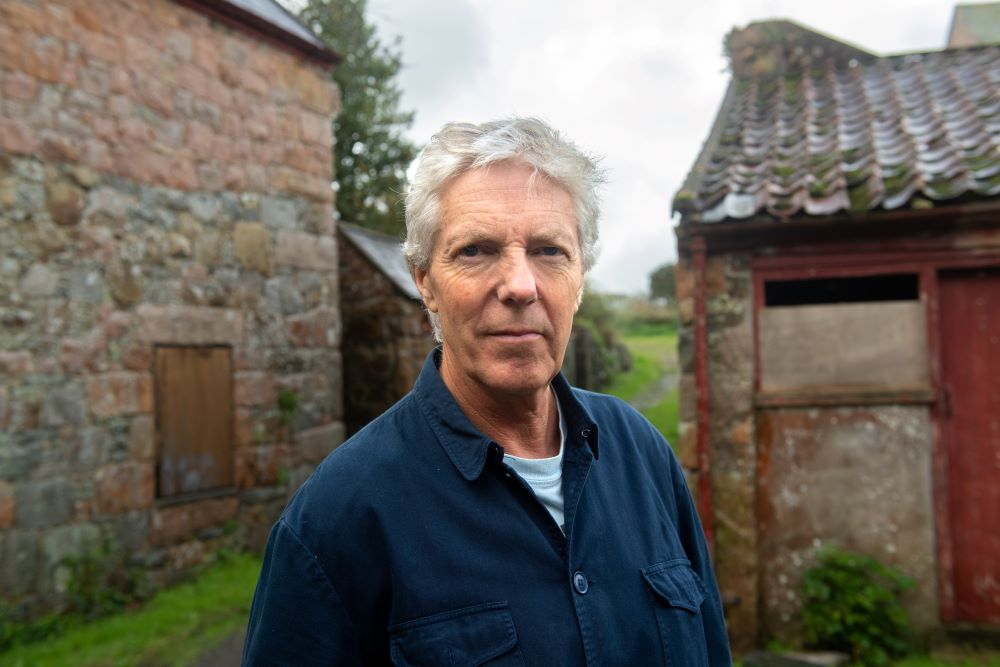
Pictured: “The approximate calculation is it takes 10 times as much carbon CO2 equivalent to demolish and rebuild a building as it does just to retrofit an existing building."
"…It’s simple: if we want to save carbon now, you use much less carbon by making all the existing buildings perform as best they can, rather than to knock them all down and replace them with Passivhauses that would use far more. And we need to be saving carbon by 2050, not by 2080, which is when the Passivhauses will finally get into carbon neutrality.
It seems like the tide is turning, and that there is more care and attention being directed towards building preservation in Jersey. Why is that?
"The Bridging Island Plan tells us quite a lot, and there’s also a lot of interest in island identity.
"…There's a general awareness, that cultural heritage, in the broadest sense, is part of where we live, and we need to look after it. Buildings are a very, very visible part of that. Interestingly, there was some concern in relation to JDC’s Waterfront development, that this was not ‘Jersey enough’. That it looked like ‘Anywhere Town’ or ‘Anywhereville’.
"…Traditional Jersey buildings look like they look because they're from here – all the component parts are made here. They're handmade here by Jersey people for Jersey people. So not surprisingly, they look like they belong… But you've got to think about the whole package.
"In historic buildings, the windows are important, the doors are important, the skirtings are important, the plastering is important. It's the combination of everything, so if you start removing bits, then you kill it with death by 1,000 cuts. In the end, you end up with no original building left, you've lost that identity.
"This is Jersey. No matter where you are – you can be in Newcastle, Northern Ireland, Cornwall, in France or be anywhere, it’s the same for anybody – getting involved in your culture, your island, your place, that's important. And that gives people a sense of wellbeing.
"So I think there are both commercial opportunities and huge benefits for culture, society and sense of place."
You can find out more about the next set of courses here.
This article appeared first in the November edition of Connect Magazine, which you can read in full below...
Comments
Comments on this story express the views of the commentator only, not Bailiwick Publishing. We are unable to guarantee the accuracy of any of those comments.